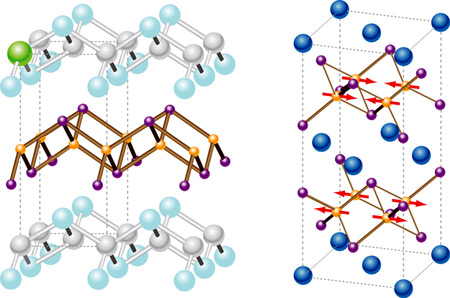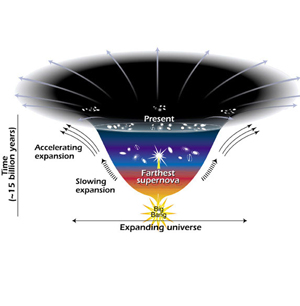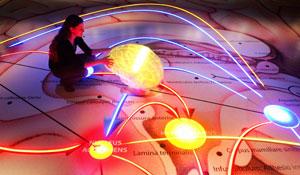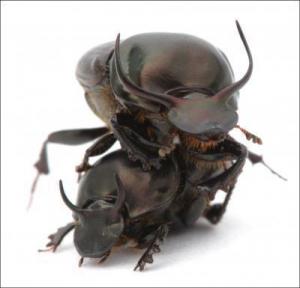
© M. Norman, Physics 1, 21 (2008)Shake it! The crystal structures of the two iron-and-arsenic superconductors (left, the samarium compound), in which vibration appear to play a key role.
A year ago, experimenters in Japan and China set the world of condensed-matter physics abuzz when they discovered a new family of high-temperature superconductors--materials that carry electricity without resistance at inexplicably high temperatures. Now, experiments show that the new compounds, which contain iron and arsenic, share something in common with the oldest known superconductors, which theorists deciphered 52 years ago. In both types of materials, tiny vibrations seem to play a crucial role in making current flow without losing energy--although that does not necessarily mean the materials work the same way.
In any superconductor, resistance-free flow sets in below a certain "critical temperature" when the electrons somehow pair to waltz along unimpeded. The question is, how do the electrons, which ordinarily repel one another, attract one another instead? In an ordinary superconductor, such as the metal niobium chilled to below 9.3 kelvin, vibrations provide the necessary "glue." An electron zipping through the material sets off a quantized vibration, or "phonon," that draws another electron in its wake. Formulated in 1957, this scheme neatly explained every superconductor known at the time and for decades to come.




Comment: This is yet one more reason to eat organic food. Wouldn't this just serve to increase the rate of virus mutation; especially since people will be eating the pigs who have eaten the corn, besides eating the corn itself? Read more about the controversy surrounding vaccines here, here, here, and here.